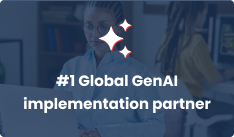The latest Facility Management Best Practices

For facility management, COVID-19 caused disruptive and indefinite changes to the workplace. With the majority of employees working from home, office and meeting space has become redundant and correspondence with facilities is remote. For employees that do need to go into the office, an office setup that accommodates social distancing is required, along with monitoring how many people are in your office each day (e.g. via desk reservations). Add other developments that were already ongoing before corona hit to that, and you have a whole new facilities landscape. All this calls for a new set of facility management best practices.
We’ve been implementing digital facility management solutions for years and see the Employee Experience (EX) becoming more important. This is due to the growing group of Generation Z workers who’re expecting a consumer-like workplace experience. As such, our best practices are primarily focused on improving the EX, because we firmly believe this is the way forward in 2021.
We start off with the toughest one among the facility management best practices.
Break down HR, IT and facilities silos to improve the Employee Experience
Nowadays, improving the Employee Experience is on many corporate agenda. Righteously so, because in the current challenging market great employee journeys can really help you retain and attract new talent. This where you can help your business gain a competitive edge.
The current problem is that siloed facility management, IT and HR processes are blocking smooths employee workflows. A centralized mobile-enabled portal will bring IT, HR and facilities together in a single place for ease of use on the employee’s end.
We consider this one of the most important facility management best practices, because such a portal acts as a one-start-shop from where employees can request anything related to the workplace. From a malfunctioning laptop to a clogged toilet or broken coffee machine.
Centralized facility services also match the expectations of the rising Gen Z workers, who expect consumer-like services at the workplace. Of course, you need to ensure the portal is accessible via both desktop and mobile to deliver that ultimate experience. Don’t forget to introduce self-service in this portal in the form of knowledge articles to help employees find answers to questions themselves.
Amidst COVID, you can also use the portal to regularly communicate about the current policy for working at the office, how to reserve a desk, etc. Plus, you can tailor the portal to fit any (upcoming) COVID scenario: whether your workforce is fully working from home, coming partly back into the office or when things get back to normal.
Engage and connect employees with digital technology
The right digital facility management solution helps you engage and connect your employees at times of social distancing and remote working, and even when things get back to normal. Communication and smooth workflows are key to create engagement in any scenario.
Let’s show some examples how technology creates employee engagement in different COVID scenarios:
- Working from home
Employee Sarah wants to report a broken phone because she spilled coffee over it at home. She navigates to the workplace services portal or opens the mobile app, clicks a few buttons and has reported the case. If she has questions, she can chat with a facilities employee to help them submit their request asap. The employee is happy, because the process is in place and it’s easy, clear and smooth.
- Slowly returning to the office
In this scenario, you need to manage the flow of returning workers to the office to accommodate for social distancing. The key here is to remember answering the following question: “How can an employee safely collaborate with coworkers and meet with customers at the office?”. This way, you meet employee needs and consider their anxieties, creating engagement. In practice, this means you must introduce efficient reservation processes for desks and meeting rooms. Digital technology is already so far advanced that you can enable employees to reserve a desk or meeting room via a 3D map of the office. How cool is that?! Don’t forget visitor registration, so you know what and when customers are visiting your office for contact tracing purposes.
Tip from a customer
Streamline the return to the office flow by dividing your workforce into groups. Do so by creating neighborhoods, where teams have a fixed set of desks they can use to collaborate at the office, or split them into behavioral groups and adjust the workspace/services accordingly:
-
- Fulltime remotes
- Fulltime office-goers
- Nomads (they come into the office whenever they feel like)
- Back to normal
When things get back to normal, it’s important to keep creating smooth flows for employees. Take meeting room reservations. By integrating room booking in the most frequently used tool for scheduling meetings—Outlook—you save employees a lot of time when scheduling meetings. Add visitor registration and additional services (like catering and AV support) to that, and the employee has a single place where they can arrange everything related to scheduling a meeting.
Data-driven facility management puts you in control
We hear so often from Facility Managers that they lack control over their operations. This means they are steering a boat blindfolded. If we ask them e.g. if they have access to stats about space usage or can show compliance with COVID guidelines, the answer is usually no.
This needs to change! Gaining control starts with making all your facilities processes data-driven. Because that is your basis for reporting and dashboards. Equipped with those, you can better control operations and monitor budgets.
What’s more, it puts you in the driver seat as expert towards the organization. You’ll be able to clearly indicate where facilities are at now and where your department is heading. Both short term and long term.
Liked our facility management best practices?
If you enjoyed this read, be sure to sign up for our newsletter to stay posted of new best practices we share in the future!
Join 1400+ ServiceNow professionals
Sign up to our monthly Flow@Work Exclusive newsletter to get free access to our expertise and lots of tips and tricks to make work flow on the Now® Platform.



